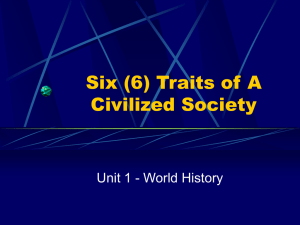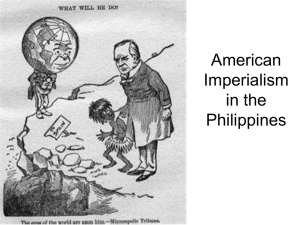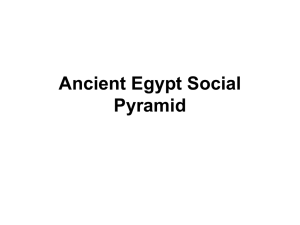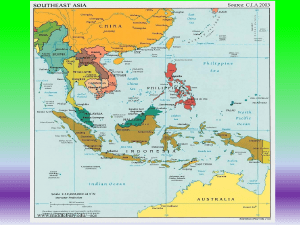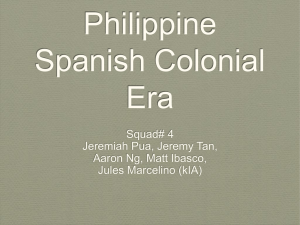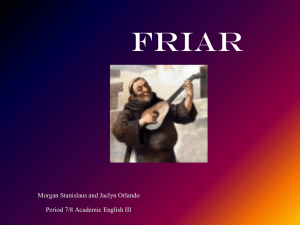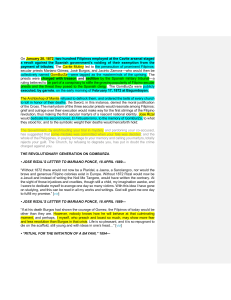nationalist movement
advertisement
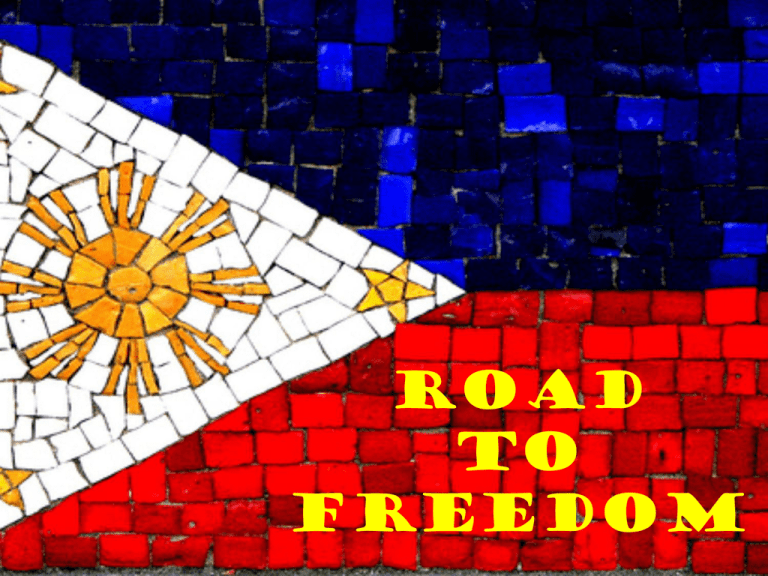
Road to Freedom NATIONALISM • A feeling brought about by the discovery of a group of people of their identity that enable them to be united • Examples: – Similarity in terms of color and physical attributes – Similarity in language, beliefs, place or territory – Similarity in terms of goals and ideologies Factors that gave Rise to Nationalism 1. The Philippines was opened to World Trade • When the King of Spain announced the opening of the Philippines in world trade, a lot of countries became interested. • Philippine products were known • Transportation and communication flourished. 2. BIRTH OF THE MIDDLE CLASS Consisted of: – Newly rich businessmen and Chinese traders – Spanish mestizo – Those who attained higher education in the Philippines and in Spain (ilustrados) Philippine Society during the Spanish Period • Peninsulares • Insulares • Mestizo • Indio 3. OPENING OF THE SUEZ CANAL • November 17, 1869 – Opening of the Suez Canal • Ferdinand de Lesseps – A Frenchman who made the Suez Canal • Connects the Red Sea and Mediterranean Sea (thus connecting Asia to Europe) • The travel from Europe to the Philippines was reduced from 3 months to 32 days. • Trade flourished • Prompted the influx of foreign newspapers and books that catapulted the Philippines to a new age LIBERALISM • Equality, Liberty, Fraternity • Freedom of Speech, Assembly, Association • The Filipinos read democratic books such as: – Social Contract – Jean Jacques Rousseau – Treatises of Government – John Locke 4. LIBERAL LEADERSHIP OF GOV. GEN. CARLOS MA. DELA TORRE • Queen Isabel II – was removed from her position in 1868 due to a revolution. Carlos Ma. De la Torre – a liberal Spaniard – Brought liberal thoughts in the Philippines to be able to protect themselves from the abuses of the Spaniards – Showed love to the Filipinos – Allowed freedom of speech – Opened Malacañang to the people on July 12, 1869 – Was replaced by Rafael de Izquierdo – an autocratic ruler THE TYRANNICAL REGIME OF RAFAEL DE IZQUIERDO •Re-imposed censorship •Banned all talks of reform and liberty •Stop the Filipinization of the Parishes in the country •Revoked the exemptions of Filipinos on force labor and tributes 5. THE SECULARIZATION ISSUE • Secular Priest – Filipino priests – Provincial – refers to the head of the Secular priests • Regular Priest – Spanish priests belonging in religious orders such as: • Augustinians • Jesuits • Recollects • Dominicans • Franciscans – Archbishop and bishop – headed the regular priests • Council of Trent (1545-1563) – states that a secular priest can be a Friar Curate • Pope Pius V – allowed the secular priests in 1567 serve in the parishes due to lack of regular priests • Archbishop Basilio Santa Justa – started making the secular priests a part of the regular priests and giving them a parish to lead. COUNCIL OF TRENT POPE PIUS V GOM-BUR-ZA • Religious Orders – opposed to the plan for they believed that Filipinos were not worthy to become Friar Curate • Msgr. Pedro Pelaez – Ecclesiastical Governor of the Church who believed that Filipino priests should be given a chance to serve. • Governor-General Simon de Anda – sided with the Filipinos • Father Jose Burgos – continued the fight upon the death of Msgr. Pelaez. 6. THE CAVITE MUTINY • January 20, 1872 • Sergeant Lamadrid – led about 200 Filipino soldiers and workers in the Cavite arsenal mutinied. • Governor-General Rafael de Izquierdo – One of the worst governor generals in the Philippines – Removed a lot of privileges enjoyed by the people in Cavite that led to the mutiny. 7. THE EXECUTION OF GOM-BUR-ZA •ALL were graduates of UST. •Fr. Burgos – head of the movement; Letran Professor; Master of ceremonies of the faculty of UST; curate of the Manila Cathedral; born in Vigan •Fr. Gomez – founder of La Verdad; curate of Bacoor, Cavite; born in Sta. Cruz, Manila •Fr. Zamorra – curate of Pasig, Rizal; born in Pandacan; lost his mind before the execution • Father Mariano Gomez – more than 70 years old – Friar Curate of Bacoor – Had Chinese blood • Father Jose Burgos – 35 years – Friar Curate of Manila Cathedral – Insulares • Padre Jacinto Zamora – 73 years – – – – Friar Curate of Marikina Insulares Unfriendly towards the Spaniards Offended Brigadier Oran – a governor in Manila which Padre Zamora did not gave honors when he visited Marikina. • Were sentenced to death by means of Garrote on February 17, 1872 • Francisco Zaldua – A Filipino witness who was paid by the Spaniards – Claimed that he was the messenger of Father Burgos • Archbishop Gregorio Meliton Martinez – did not allow the removing of the habit of the three accused – Wanted the church bells to be played upon the execution as a respect to the three priests SIGNIFICANCE OF THEIR DEATH •NATIONAL CONSCIOUSNESS EMERGED •GOMBURZA became the battle cry of the propaganda movement •The Katipunan use the word GOMBURZA as one of its passwords •The Katipunan declared Feb. 17 as a commemorative day of prayer 1. KING ANNOUNCED THE OPENING OF THE PHILIPPINES TO WORLD TRADE 2. BIRTH OF THE MIDDLE CLASS: THE ILUSTRADOS 5. THE SECULARIZATION PROJECT 6. CAVITE MUTINY: JAN. 20, 1872 THE BIRTH OF NATIONALISM 3. OPENING OF THE SUEZ CANAL NOV. 17, 1869 4. GOV. GEN. CARLOS MA. DELA TORRE 1868 7. EXECUTION OF GOM-BUR-ZA: FEB. 17, 1872
